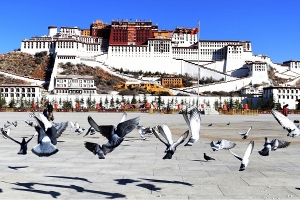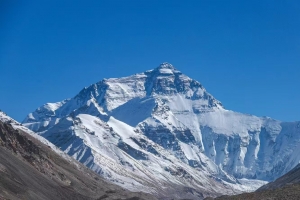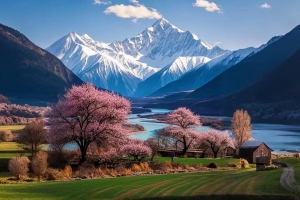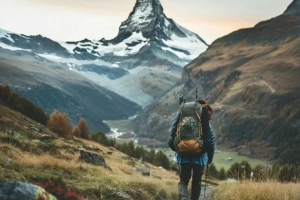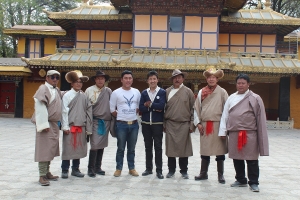Approaching the Sacred Lake Manasarovar — Choosing the Right Moment
On the Ali Plateau of Tibet, Lake Manasarovar lies like a mirror of the sky, nestled between snowy mountains, silent and sacred. It is not only a natural masterpiece but also a spiritual destination that countless devotees aspire to circumambulate once in their lifetime.
However, this holy lake does not always reveal its most beautiful side. In spring, the ice begins to melt; in summer, the lake ripples with clear waves; autumn brings rich colors; and winter covers the area with deep snow and serene silence.
If you wish to see its purest blue and the vast sky meeting the lake, choosing the right time to visit is far more important than you might think.
This article will help you understand the best times to visit Lake Manasarovar, the seasonal differences in scenery and experiences, and how to plan a smooth pilgrimage to this sacred lake.
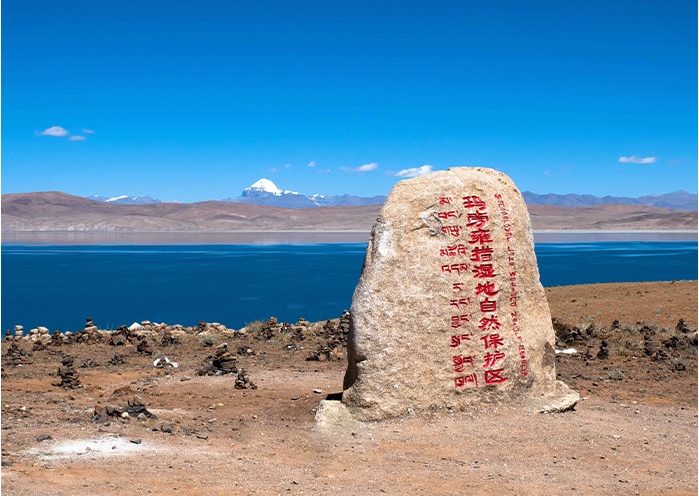
Lake Manasarovar
Best Travel Seasons for Lake Manasarovar
Best period: Mid-May to early October
During this time, the climate is relatively mild and roads are accessible, making it the best season to visit Ali and enjoy the lakeside snow-capped mountains.
May–June: Transition from Spring to Summer — Clear and Tranquil
As ice and snow melt, the lake surface returns to a crystal-clear blue, as if the sky has fallen onto the earth. Grasslands gradually turn green, and herds of cattle and sheep dot the lakeshore, creating a quiet and vast atmosphere. The climate is cool and visitors are few, making it ideal for photography and peaceful travel.
July–August: Summer Peak Season — Pilgrimage High Season
Although July and August see slightly more rain, the interplay of clouds and landscape highlights the lake’s ethereal beauty. The lake surface acts like a mirror, creating a spiritual atmosphere. The Saga Dawa festival connects devotees to the lake, and circumambulation rituals are spectacular—this is the most religiously significant time of the year.
The weather is mild with adequate oxygen, suitable for high-altitude travel, but visitor numbers are high, so accommodation should be booked in advance.
September–Early October: Crisp Autumn — Rich and Colorful
During September and early October, Manasarovar is framed by blue skies, white clouds, and golden grasslands, creating vibrant and layered scenery perfect for photography and hiking. Though mornings and evenings are cooler, daylight is plentiful and weather stable, ideal for in-depth exploration. Fewer pilgrims make the lakeshore more serene and spiritual, perfect for quiet reflection and reverence.
What to Expect Each Season
| Season | Scenic Highlights | Suitable for Pilgrimage? |
| May–June | Snow-capped mountains, clear lake, tranquil atmosphere | Very suitable for peaceful pilgrimage |
| July–August | Flourishing nature, crowds of devotees | Most spiritually vibrant season |
| Sept–Oct | Blue sky + golden grassland, rich autumn colors | Great for photography and quiet travel |
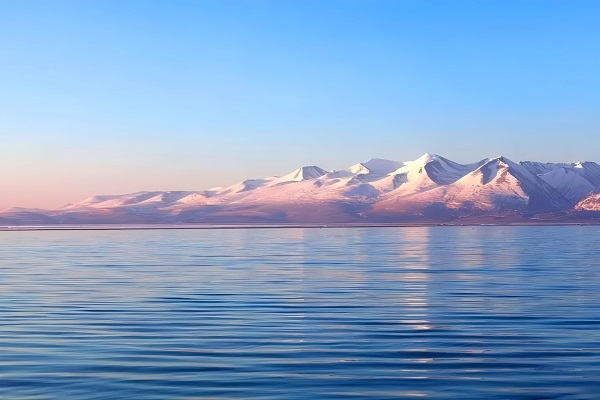
Lake Manasarovar
Recommended Travel Route for Lake Manasarovar
15 Day Mount Kailash Group Tour: Ngari+Lake Manasarovar+Lhasa+Yamdrok Lake+E.B.C.+Shigatse $1898
Travel Tips for Lake Manasarovar
1.Altitude acclimatization
Manasarovar sits at about 4,580 meters above sea level, with a high risk of altitude sickness. Common symptoms include headache, fatigue, and insomnia. It is advisable to stay 2–3 days in Lhasa (3,600m) or Ali (4,300m) beforehand to acclimate, rather than heading straight to the lake.
2.Transportation
The area is remote, with no public transportation directly to the lake. Most visitors choose private cars or join tour groups. The pilgrimage route often combines visits to Mount Kailash, with Tarqinq Town as a key transit and rest point.
3.Accommodation
There are no star-rated hotels by the lake, only simple guesthouses or Tibetan family inns with basic conditions. Most travelers prefer staying in Tarqinq or Purang County for more accommodation options, comfort, and easier access to supplies.
4.Religious customs
Manasarovar is a sacred lake respected by Buddhism, Hinduism, and Bon religion alike. Pilgrims should circumambulate the lake clockwise as a sign of reverence. Many devotees perform full-body prostrations in pilgrimage, so visitors should avoid close-up photography or disturbing rituals and always respect local religious beliefs and customs.
5.Packing advice
With strong UV rays and large temperature differences between day and night, bring down jackets, sunscreen, sunglasses, sun hats, and other protective gear. Supplies around the lake are scarce; prepare sleeping bags, dry food, essential medicine, and plenty of water.
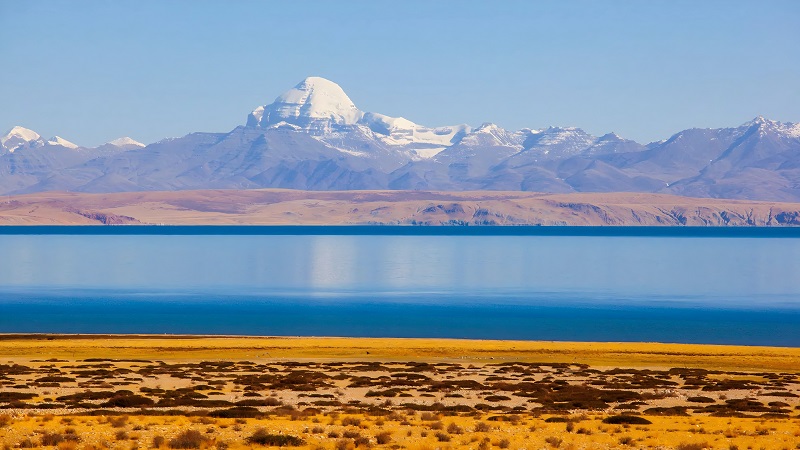
Lake Manasarovar
Choose the Right Time — Approach the Soul of the Sacred Lake
The beauty of Lake Manasarovar lies not only in its stunning scenery but also in its quiet dignity as a spiritual center. From May to October is when you can get closest to the lake—whether for pilgrimage, photography, hiking, or a soul-cleansing journey.
Slow down, carry respect in your heart, and come meet the most sacred lake in Tibet.


